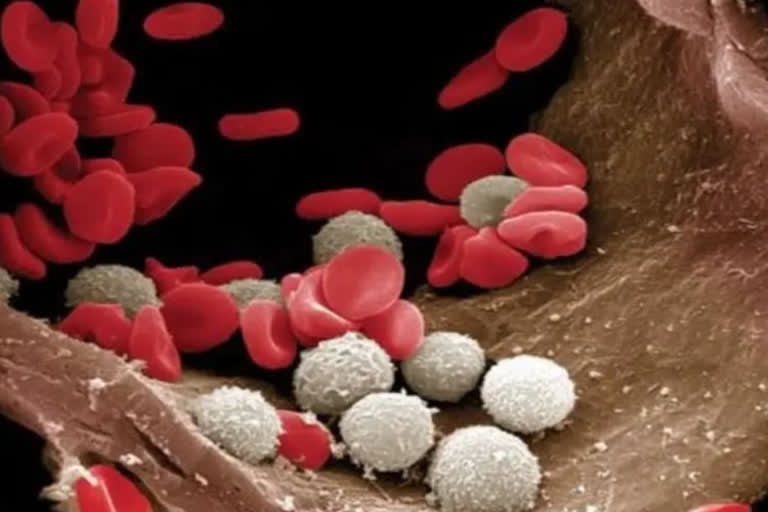Bengaluru (Karnataka): A new study by the Indian Institute of Science (IISc) have found the mechanism behind the aggregation of the mutant haemoglobin in sickle cell anaemia.
Sickle cell anaemia is an inherited disorder in which red blood cells (RBCs) break down and become misshapen. The cells die early, leaving a shortage of healthy red blood cells (sickle cell anaemia) and can block blood flow causing pain (sickle cell crisis).
The IISc said that researchers Dibyajyoti Maity and Debnath Pal at the Department of computational and data science used simulations of haemoglobin’s molecular dynamics to arrive at the findings, adding that the insights from this study will be an important step in our understanding of sickle cell anaemia.
The condition is caused by a mutation in the gene coding for haemoglobin. The shape of the RBCs gets deformed due to the accumulation of the mutant haemoglobin into fibrils inside the cells when the concentration of oxygen in the blood is low, and the haemoglobin molecule becomes tensed, IISc said.
The haemoglobin molecule is made up of two dimers, having two subunits, an α and a β subunits. The researchers have shown that the angle between the two dimers of haemoglobin is a distinctive feature of the two states (tensed and relaxed) of the molecule.
Both normal and mutant haemoglobin undergo tensed-to-relaxed transition irrespective of the presence or deficiency of oxygen when starting from the tensed state, the researchers have found. Besides, the researchers have forecasted that an intermediate state between the tensed and relaxed states facilitates the transitions.
The researchers said that their study has also inferred that in the mutated form of haemoglobin, it is the deficiency of glutamate plays a greater role in the formation of fibrils in sickle cells.
Sickle cell anaemia is one of a group of disorders known as sickle cell disease (SCD). A genetic disorder of the red blood cells, SCD causes recurrent episodes of debilitating pain. Additional symptoms can include chronic anaemia, acute chest syndrome, stroke, splenic and renal dysfunction, pain crises and susceptibility to bacterial infections.



